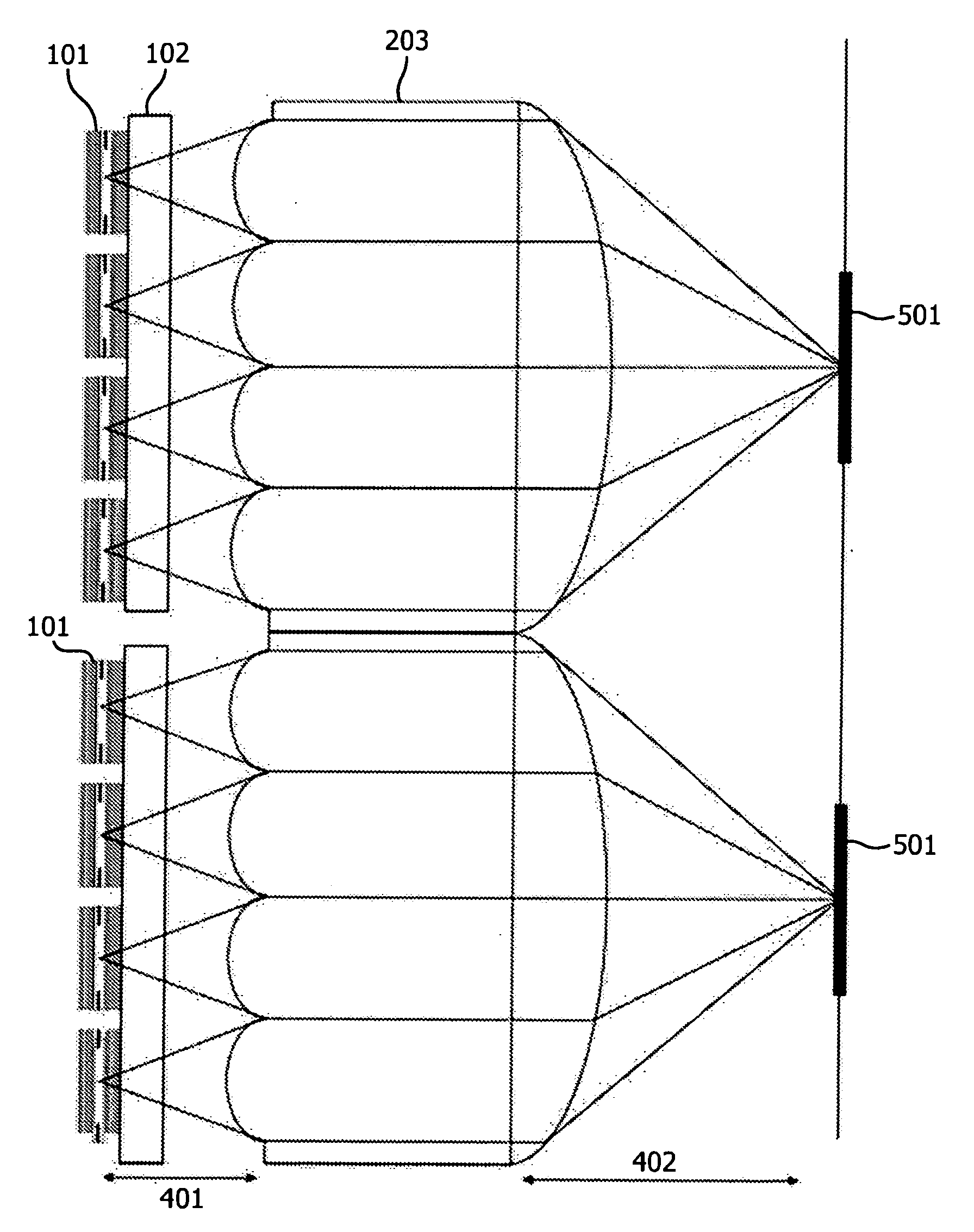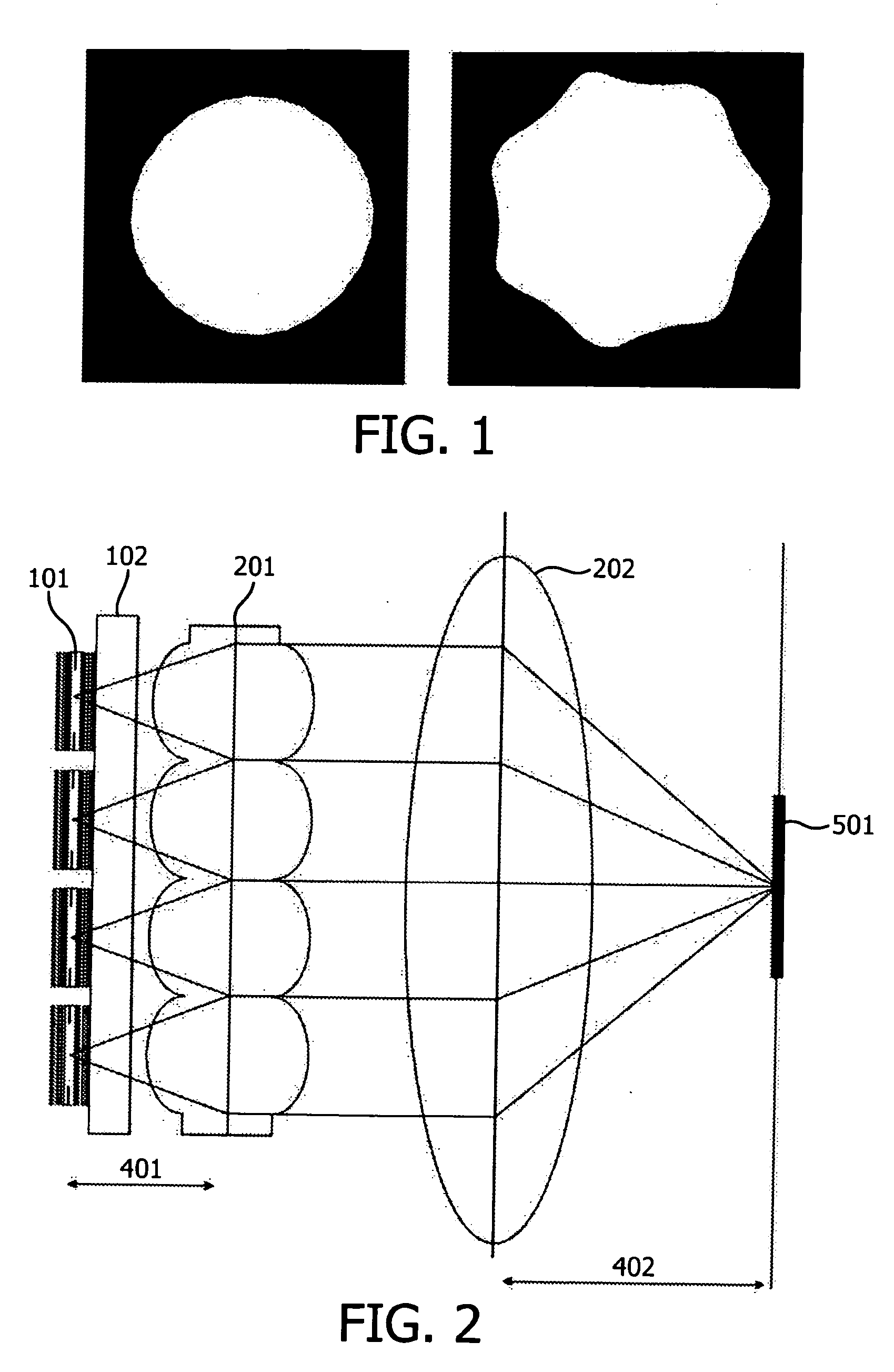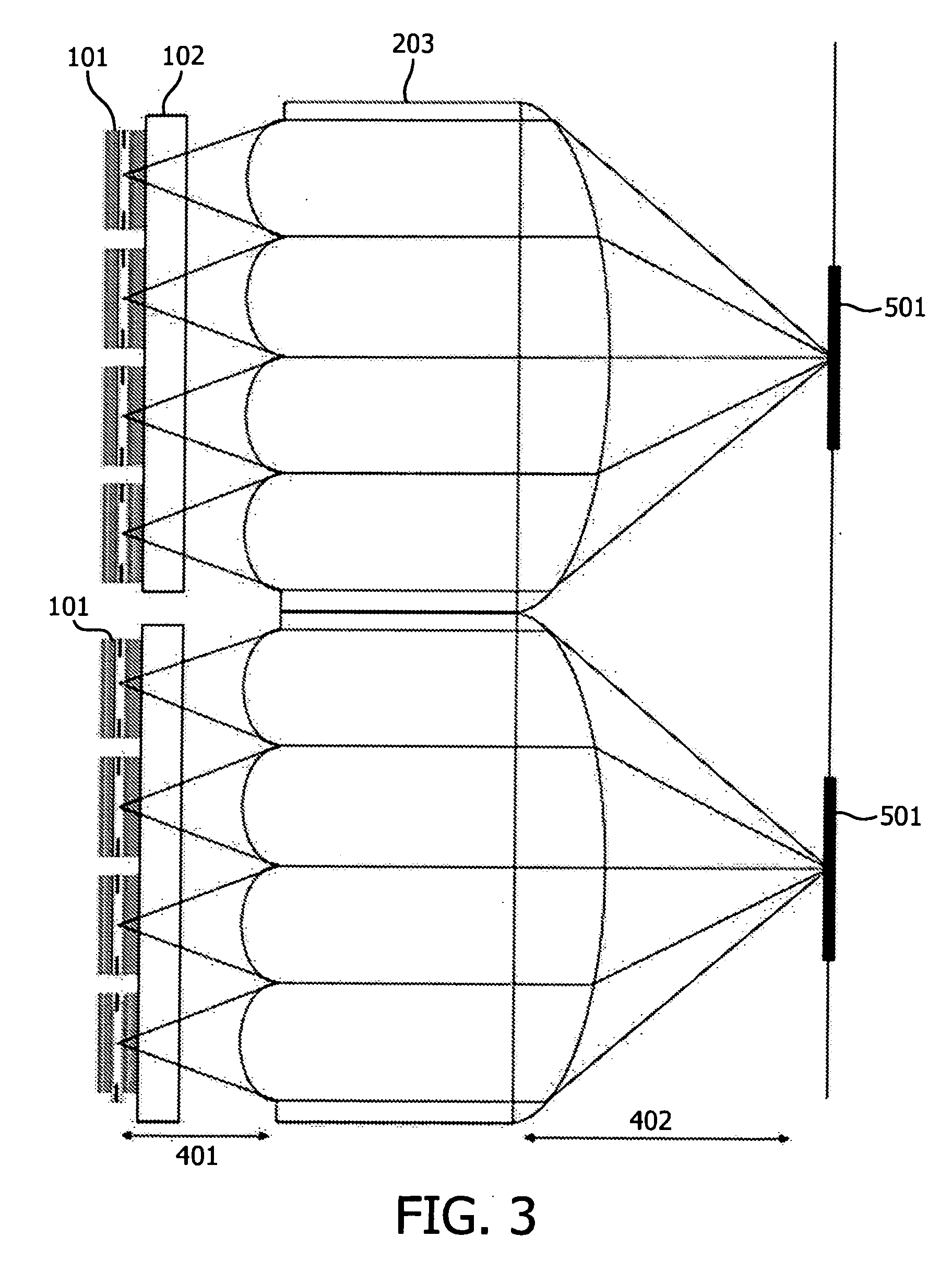Laser device with configurable intensity distribution
a laser device and intensity distribution technology, applied in semiconductor lasers, instruments, manufacturing tools, etc., can solve the problem that the intensity distribution cannot be switched to a different shape, and achieve the effect of dimming the single vcsel or subgroup, and large degree of freedom
- Summary
- Abstract
- Description
- Claims
- Application Information
AI Technical Summary
Benefits of technology
Problems solved by technology
Method used
Image
Examples
Embodiment Construction
[0051]The intensity distribution of large area VCSELs in the near field can be set by the shape of the oxide aperture of the VCSEL, by the shape of the proton implantation, by the shape of the mesa or by the shape of the contact geometry of the VCSEL. FIG. 1 shows two examples of such an intensity distribution in the near field achieved with different shapes of the oxide aperture. On the left hand side a circular shape is achieved by a circular oxide aperture. The flower petal shaped intensity distribution on the right hand side is achieved by an oxide aperture having the same shape. The intensity profile of both examples is quite homogeneous and has sharp edges for the large angle Fourier modes, only slightly modulated by an interference pattern (not depicted in the figure). Using two large area VCSELs with oxide apertures of the above two shapes in the proposed laser device, it is possible to switch the intensity distribution in the working plane between these two shapes of the in...
PUM
| Property | Measurement | Unit |
|---|---|---|
| Power | aaaaa | aaaaa |
| Diameter | aaaaa | aaaaa |
| Area | aaaaa | aaaaa |
Abstract
Description
Claims
Application Information
 Login to View More
Login to View More - R&D
- Intellectual Property
- Life Sciences
- Materials
- Tech Scout
- Unparalleled Data Quality
- Higher Quality Content
- 60% Fewer Hallucinations
Browse by: Latest US Patents, China's latest patents, Technical Efficacy Thesaurus, Application Domain, Technology Topic, Popular Technical Reports.
© 2025 PatSnap. All rights reserved.Legal|Privacy policy|Modern Slavery Act Transparency Statement|Sitemap|About US| Contact US: help@patsnap.com



